Who’s Haunting Fechheimer House, No. 22 Garfield Place?
Who’s Haunting Fechheimer House, No. 22 Garfield Place?
The Hauntings of No. 22 Garfield Place, Cincinnati, Ohio
A Historic Context of Clothier Marcus Fechheimer, His Primary Interests and His Mansion

An obvious haunting at No. 22 Garfield Place....
Introduction
Whether it’s a Fechheimer, a Seasongood or a Sach, we may never know precisely who, “Hebrew” or not, haunts the halls of No. 22 Garfield Place at Cincinnati, but we can certainly assert our educated speculations…as we know that the exposition of facts is often times the best formula for the settlement of a delicate matter! Among the “paranorms” of this world there is a typology of hauntings including intelligent haunting (interactions/communication), residual haunting (pattern related), poltergeist (self-related), unfinished business (death leading to unrest), negative haunting (forceful “move-out” tactics), clinging spirits (follower of one), jumper (cemetery-related), and demonic haunting (evil spirits), among others. We do not suggest that we have made a great study of paranormal activity or even “haunted houses” in general, but we know that often times these sorts of events can be related to the history of a place. Therefore, to aide our correspondent, we have made it our business to prepare this rather lengthy dossier on the subject of No. 22 Garfield Place, Cincinnati, Ohio.
-

- Looking East, at the juncture of Center Street and West Eighth (part of which is now Garfield place), this statue memorializing the Ohio President James Garfield was once in the center of the street a common placement of small statues in the carriage days of 19th century America.
The Nature Of The Jewry In 19th Century Cincinnati
Before the nineteenth century Reformation of Judaism in America, religious Jews were confined to the strictures of demanding Old Testament laws and the rigid social mores that had managed to linger for most of the religion’s existence. However, this would all change. And the initiation of that change in the United States would largely take root in Cincinnati. Unlike most cities in 19th century America, the Jews of Cincinnati, seen often as German immigrants of the Hebrew religion, Israelites, were equals in society. Perhaps still somewhat separate (but equal), this was the case for most immigrants. This was the precursor of an overall denouncement of anti-semitismnot only in Cincinnati, but in the larger realm of American sophistication and society. In fact, while the eminent Cincinnati, Ohio was a religious town, it was also of unusual social progression that in its day might have seemed quite liberal. Among the social reformists was a certain Rabbi–Isaac M. Wise (1819-1900), American Reform Rabbi, editor, and author. Yet Rabbi Wise was not entirely alone in his endeavors.
Rabbi Isaac Wise (1819-1900)
Even after securing a larger edifice for the Second Jewish Congregation of Albany in the purchase of the SouthPearl Street Baptist Church former building for roughly $1,000 and achieving national renown as rabbi and intellect of social progression, Albany wouldn’t have it–or simply couldn’t. Apparently, due to the lack of willingness to accept his Reform Principles and a general financial denigration, Rabbi Wise removed from Albany, New York in 1854 “a almost broken man” to what would become his beloved Cincinnati on the condition that he have a lifetime situation as Rabbi with 100 percent board approval and, of course, prior knowledge of his interest in Reform. Being a native of Steingrub, Bohemia, his liberalism probably came about during this time and while shortly living in Germany as Jews in this part of the world were unusually progressive on the subject of Reform. This a trait not present, on a whole, in Jews further east. Jews were characterized into two communities—“Sephardim” and “Ashkenazim,” the latter being of German and Polish descent.

From an 1869 City Guide, this section of the guide lists the name, address and leader of each synagogue in Cincinnati.
However, Wise’s interest in Reform did not originate in Cincinnati. While in Albany, he pushed to phase out the use of Hebrew in services, allowing both English and German. In his eyes this was not a disregard or in disrespect, but simply a tactic he employed to acculturate Jews. As early as 1852, Rabbi Wise was making history. Much to the shock of America, he conducted the opening prayer of the New York State Legislature, a practice of acculturation unknown before in world history and reported upon “by repeated blurb” in newspapers nationwide. It had been just eight years earlier that the Weise family had immigrated to America, Isaac, his wife, their child, and a measly $2 were all that embodied a new, “Wise” start in the land of opportunity. His entrance at Cincinnati was afforded by much preexisting thought and generosity—an attitude that made Cincinnati the “tolerant” town it was in those days. Among Wise’s benefactors and ardent supporters was the successful German-born clothier–Mr. Marcus Fechheimer (1818-1881).

The signature of Marcus Fecheimer, extracted from his passport application of 1863.
Marcus Fechheimer (1818-1881)
Born in Bavaria, July 1818, Marcus Fechheimer came into America in 1837 at which time, he immediately undertook employment as a peddler or traveling salesman–in Pennsylvania. Just three years earlier his older brother, Abram Fechheimer (Abraham in American parlance), entered the United States through Baltimore, Maryland and, upon arrival, traveled to Philadelphia, Pennsylvania where he procured a peddler’s license. This itinerant occupation certainly endured for a few years, probably lasting from 1834 to the late 1830s when Abram was among the founders of a synagogue at Cincinnati, Ohio in 1839. Yet it was not until 1841 that he was listed in the local city directory: “Fechheimer & Goldschmidt Co., Clothiers.” Louis Goldschmidt was Abram’s partner. While precise details of the company’s establishment are unknown, work most probably began at the beginning of the 1840s. Marcus Fechheimer would follow his brother to Cincinnati. Despite assertions in Marcus’ later obituaries that he arrived upon invitation of his brother “Abraham” in the late 1840s, we have city directory intelligence of his arrival much earlier: “Fechheimer, Marcus (F. Goldsmith& Co.), boarding with Wolf Fechheimer.” Perhaps Wolf had a big house as he was not a clothier nor was he officially affiliated , but owned a coffee house, in which several Jews aside from the Fechheimers chose to board–Julius Rodenburg, a peddler, Soloman Rose, a bar keeper, and even Louis Goldschmidt were among his residential patrons.
Through the 1840s Marcus Fechheimer was listed as working for the company of his brother and Louis Goldschmidt. However, by 1853, the proprietors, included a third—Marcus Fechheimer. And by 1855, it was “…A. Fechheimer & Brother, Wholesale Clothiers, importers and dealers in Foreign and Domestic dry goods, No. 71 Walnut Street, 6th Door below Pearl.” Abram lived at No. 14 West 8th, Marcus at No. 37 Center. Nevertheless, in 1856, the city directory indicates that it was just the Mrs. Abraham Fechheimer, at No. 14 West 9th(?), withMarcus listed alone, bold-ed font, in relationship to the “family” business. Interestingly enough, later obituaries of Marcus Fechheimer indicate that Abram had traveled to the Kentucky plantation or country store of his brother Sam Fechheimerwho needed to be “taken care of” as he was ill. So the story goes–Abram died too during this time. While this seems a strange move for a busy man with his own prosperous business, we have nothing to contradict it. There is very little information available on Abram as opposed to Marcus.
No. 86 West 8th Street OR No. 22 Garfield Place
Robinson, Anderson OR Was It Hannaford?
With his newly founded position in the business, Marcus Fechheimer moved from his dwelling in Center Street to No. 86 West 8th (now No. 22 Garfield Place), which is first listed in the city directory in 1856. This is curious as it is “common knowledge” that the current mansion was designed and constructed on the exact spot between 1862-63 by Samuel Hannaford (1835-1911), the eminent English-born Cincinnati architect who also designed the German Music Hall, &tc. It would be very much unlike a German-born American Immigrant to demolish oneresidential building to construct another as practicality was usually the case with this generation with their children being the more ostentatious. Evidence in the Hand-Book of Cincinnati (Circa 1869) corroborates that the mansion and Fechheimer’s office was designed by Anderson & Hannaford, Architects. Hannaford was certainly in America by 1856 as he had been among his parents and seven siblings when they entered the United States in 1844. Immediately settling in Cincinnati, Hannafordstarted at Farmers’ College where he studied scientific farming only to be forced to leave home at the confluence of his father staunch Presbyterianism and his belief in religious freedom at which time he took an apprenticeship with John R. Hamilton, architect, in 11854, probably being used as a drafts man. Between 1856 and 1857, Hannaford started his own firm on 3rd Street. However, this period is rather shaky as there is no real evidence of his “own firm” having a solid foundation so that by 1858, Hannaford was employed by the architectural firm of Edwin Anderson and William Tinsley. This means that if the mansion was built by 1856 then it was either designed by Hannaford during the time of his own practice, perhaps by Hannafordduring his apprenticeship with John R. Hamilton, or by Anderson and/or Tinsley prior to Anderson joining the firm. There is also the possibility that Fechheimer’s listing in the city directory was in anticipation of his new mansion or that, most improbably, the No. 86 West 8th of 1856 was destroyed by fire or demolished for the current mansion. We would need to employ a much more complex study to be completely certain. And since the order of Anderson & Hannaford’s residential list is not alphabetical, and we presume, not by importance, one might assume that the edifice of Marcus Fechheimer was their first (Circa 1850s).

Architectural services of Anderson & Hannaford were also advertised in the Cincinnati Guide. Please note that under residences is listed, "Marcus Fechheimer," which indidcates that Hannaford certainly had inolvedment in the design or, at the least, the formation of the mansion at No. 86 West 8th Street (now No. 22 Garfield Place).
A Slight Change After Let’s Say 2000+ Years:
The Rise of Rabbi Wise And One Of His Quieted Partners–Marcus Fechheimer
Just a few years prior to his move to 86 West Eighth Street, a great event had occurred for not only Marcus Fechheimer, but for Cincinnati, Judaism and American liberalism–Rabbi Wise had arrived at Cincinnati. As we previously mentioned, Rabbi Wise had endured rough times in Albany: “…endured everything–blows and kicks, mockery and derision, struggle and defeat, wounds and pains…” After enough was finally enough, the details of which are too tedious and lengthy for this number in our electronic pages, Wise received what would become an employment opportunity and an ”out” in regards to his problems in Albany from, ”…an unknown gentleman…,” Jacob Goodheart (seriously) of Cincinnati and, in turn, the B’ne Yeshurun congregation of Cincinnati (founded in 1841). Once he confirmed that the letter was not in mockery, given recent negative press, and that a new impetus was in his future at Cincinnati, he made his plans, and on the conditions previously mentioned, moved into his future. By April 1854, Wise had removed to Cincinnati where he met Marcus Fechheimer, then president of the congregation, among others whom he found to be quite gracious.
-

- Isaac M. Wise, Reform Leader, Rabbi, Author, and Editor
In 1850 prior to Wise’s arrival the Marcus FechheimerResidence included him, his wife Nanny (22 years old), Rosaline (3/12 months old), Teresa Fechheimer (18 years old)—Marcus’ sister, Leopold Fechheimer (13 years old)—Marcus’ brother, Morris Fechheimer(17 years old)—Marcus’s brother, and Caroline Gibberd. Living nearby, the Abram FechheimerHouse included him (36 years old), his wife Sophia (34 years old), his children—Mary, Jane, and Meyer (7,3, and 5 years old respectively), Caroline Holstein (33 years old), Lewellan Holstein (29 years old)—a clerk, probably for Abram, and Martin Fechheimer (14 years old)—probably a sibling.
-

- Around 1900, this photograph captured the former residential scene of Garfield Place, which would have certainly been even more fashionable in Fechheimer’s day. Not that to the left of the statue is a large mansion that appears very similar to the Fechheimer Mansion. Interestingly, one of his brother’s lived in a house at No. 85 West 8th Street.
What Was Going On In Fechheimer’s House?
According to Wise, and the city directory as well, Fechheimer then lived at the corner of Longworth(known later as Center Street) and Race Streets. Wise, and presumably his family, stayed with the Fechheimers in their early days, where they apparently felt quite at home. It was not long, weeks perhaps, until Wise felt very much installed at the synagogue and would deliver his first sermon in German, clearing-up any doubts he had on the future of the religion in America. And while most of the early efforts in Reform are attributed to Wise, it was the congregation’s president, Marcus Fechheimer, who on only the second Sabbath of the new rabbi made announcement on “his own” accord:
“Since English and German sermons are preached alternately during the morning service, the piutim (songs/poems in the Orthodox Judea religion) have become superfluous; they are therefore abolished till further notice.”
Not only did this settle one “old fashion” and apparently unnecessary part of worship, it was just the beginning as the “sale of the mitzvot” was also abolished. Previously, and still among Orthodox Jews, the sale of the mitzvot was a portion of a worship service in a synagogue that made “sacrifices” or tithes very public. At the termination of this practice in Cincinnati, B’ne Yeshurun would have “passed the plate” or adopted a method that would make financial contributions or project financial contributions far more of a private matter. More importantly, the goal was to emulate protestant methods of fund raising. Also much to the delight of Fechheimer, Wise soon after established a choir, which, in itself, had not be a part of Judaism. However, the real uproar came when non-Jewish, but talent vocalists were admitted in the choir, which was a great epoch in Reform—a practice now common place in Reformed synagogues. Among the changes, seating went form sexually segregated to separation by family, a self-imposed decision. These changes alone were monument in not only American history but in the larger history of Judaism. As we know, Wise was monumental in these changes, but perhaps ole’ Marcus Fechheimer’s greater involvement has slipped through the cracks…
-

- The German Music Hall at Cincinnati as per the Hannaford design as the realization of this design was not completely realize.
In accounts accorded by the oldest daughter, Emily Fechheimer Seasongood, her mother Nanny, Mrs. Marcus Fechheimer, was always very progressive with a strong tie to the “old way.” She was also very creative, designing and constructing clothing for her family members. She even used a Bavarian spinning wheel, an object she later donated to a local museum. Despite their growing wealth, Nanny Fechheimer prepared the meals, but was intelligent enough understand where to draw the line, hiring highly specialized private tutors for aspects of her children’s education—in fact, they even employed a “highly educated” maid. And despite the demands o f a growing business, the family would always gather about the “grate fire” (only lit when cold) in the evenings where Marcus Fechheimer would readto his wife and children. Unlike today’s world work for Marcus was just a couple blocks away. Privilege, however, afforded much as the children were tutored well beyond their primary education, including drawing, music, singing and even more athletic activities at the “gymnasium.” With private tutors, the children also attended primary school at the synagogue, learning English and Hebrew (but not for long), but would later study at “Miss Appleton’s,” where they learned Roman, Algebra…etc… Prior to the Civil War, many summers were passed at the large plantation of Marcus’ brother Sam Fechheimer in Rogersville, Kentucky. Here they saw slave life as they probably had caught a glimpse of just across the river in Cincinnati. Later, the children were inclined to pursue whatever was of interest with no consideration of cost. Emily was trained in music and performance by one of the most talented soprantos in Cincinnati. Marcus and Nanny had four children–three girls and a boy—Rosa, Emily, S. Marcus and Pauline Fechheimer.
-

- In 1863, this document was submitted for the passport of Marcus Fechheimer, his wife and their two daughters.
By 1860, the household at 86 West 8thStreet included Marcus, Nanny, Rosa, another daughter: Emily , still Leopold —working as a clerk for Marcus, Henry Fechheimer—also a clerk, and two servants—Emma Hess and Barbara Gallar. At this time Marcus Fechheimer was worth $60,000 in personal estate and $65,000 in real estate. By 1862, his work address was 82 West Pearl., an address that would serve for almost every Fechheimer in the city directory—aside from Wolf Fechheimer who then worked in dry goods at 627 Vine Street. By the end of the decade Marcus still maintained his company but under new partnership as Fechheimer, Fenkel & Co. at 107 West 3rdStreet. He also had holdings in Fechheimer Karpeles & Co., importers of “Musical instruments, francy goods, toys, notions, and cultlery—at 143 Walnut Street. Leopold S. Fechheimer had moved out of his uncle’s house by 1869—ocuppying a substantial row house at 134 West 8thStreet. Henry S. Fechheimer too had left the “next” and was by then at 327 West 8th Street.
-

- Samuel Hannaford, Architect, Cincinnati, Ohio
By 1870 the household of Marcus Fechheimer included he and his wife, his children—Rosa, Emily, Samuel, and Pauline, and three servants Lena Hammersclay, Elizabeth Swartz, and Kate Chamerlanine. A few doors down was the home of Jacob and Magdalena Seasongood, in their 50s, with four children—Laura, Simon, Adolph, and Charles—Alfred Seasongood had already left home.

The interior of the Isaac M Wise Temple on Plum Street, in Cincinnati.
By the late 1860s, the success of his endeavors as a clothier afforded him numerous other interests that would mature greatly through the 1870s. Just to name a few of these involvements, Fechheimer was a Director of the German National Bank, a Director of the Western German Bank, a Director on the board of the National Insurance Company of Cincinnati, a mason in good standing, a member of the Hebrew Benevolent Society, the Hebrew Relief Society, the Jewish Hospital Society, the Cleveland Orphan Society, among others. Between the 1860s and the 1870s the Fechheimers wealth afforded them the luxury of summering annually in Saratoga, New York as did many of the privileged. They were even once patrons of the Grand Union Hotel made notorious by the antisemitic denial of Joseph Seligman’s patronage at the order of Judge Henry Hilton in 1877.
Marcus Fechheimer had spent years supporting the German Theater—the music hall. In 1878, he served on the Board of Transportation to ensure the location and design of the Union Depot. As usual the Fechheimers summered in Saratoga in 1879, during which year Marcus remained a member of the Board of Transportation, served on the Taxpayers League through 1880, and, by 1880, was even a member of the local Board of Education. A Democrat, Marcus Fechheimer was always tempted to run for public office, yet he decline repeatedly. Also in 1880, another change came for Marcus as Fechheimer, Fenkel, & Co. was dissolved and a new company formed with his younger brother to found Marcus & Leopold S. Fechheimer & Co. In that same year Marcus’ company contributed to the Aide for Firemans’ Families as well. It was a busy time for Marcus Fechheimer. By 1879, Leopold S. Fechheimer had moved to a more fashionable area, as Garfield Place was already become quite close to downtown—as commerce moved up. Yet the Marcus Fechheimers remained. Two of his daughters married early-on, the oldest, as there was a substantial age gap in the birth of the children. Rosa, the oldest married S.B. Sachs and Emily, the second child, married Alfred Seasongood—both of established Jewish-Cincinnati Families.
The Fechheimer Mansion was full in 1880–Marcus, Nannie, their daughter: Rosa (Fechheimer) Sachs, Rosa’s husband Samuel Sachs–”keeping a shoe house,” Rosa’s three children–Helen, Ettie, and Nessie, and several servants.
-

- Looking West at Garfield Place with the Statue of President Garfield at the left and the low building to the right being No. 22 Garfield Place, the Fechheimer Mansion.
Noted in the local papers, in March 1881, Marcus and Nanny Fechheimer attended the circumcision of Rabbi Wise’s youngest son—the last of 14 children. By August 1881, the Fechheimers were safely removed to Saratoga, escaping the summer heat of Cincinnati. Near the end of a typical season, the trip was tragically cut short by an abrupt illness. The family immediately returned to Cincinnati. The illness progressed quickly. It was acute dysentery—then a deadly disease. Two days later it proved fatal. Marcus Fechheimer was dead. All of his involvements were cut short. Even though death at 64 was fairly common, his family and friends must have been extremely shocked–as we know, he had a been vigorous and active man right until the end.
An Unexpected Departure
An “Israelite,” he considered himself an American first and would go to his grave as such.
On the morning of September 18, 1881 at precisely 10 o’clock the funeral of Marcus Fechheimer took place with his old friend and Rabbi, Isaac M. Wise presiding. While much of the Hebrew funerary traditions had been discarded with Reform, his viewing, which took place at his home, No. 86 West 8th Street (now No. 22 Garfield Place) not mention his short wait for funeral services and burial, involved a simple wood coffin, which was apparently among the few old traditions of the religion not abandoned. Unlike previous generations, flowers were present in the parlors on and around the coffin:
“there was literally a profusion of flowers, exhaling a fragrance which to the minds of many present, must have been singularly symbolic of the virtues of the late occupant. There were wreaths, pillows, and many other beautiful designs, offered as a grateful tribute…”
And to a creepy point as per modern interpretations:
“…It was a column about four feet high, around which were gracefully twined green leaves, interspersed here and there with a flower. On the base, inscribed with immortiles, were the words: “Our Employer.” Resting on the column crosswise was an anchor of white tube-roses, from the top of which were dependent the three rings (odd fellows), emblematic of Friendship, Love, and Truth. The column was surmounted by a white dove with hovering wings.”
-

- The Fechheimer Mansion, formerly 86 West 8th Street, which is now known as No. 22 Garfield Place. An important local specimen of Italianate Architecture.
Wise spoke eloquently about his former benefactor, congregant, and friend and he did this from life experience rather than as a subtle, impersonal representation. A very busy man, Marcus Fechheimer had not taken the time to prepare a will. Yes, this was due probably to his busy schedule in part, but also in effect as recognition of the fact that he did not expect such a thief in the night as death had come to him. Henry B. Sachs, his son-in-law, and Henry S. Fechheimer, his son, appeared before Judge Mitson on January 24, just weeks after his death, where they declared that his personal assets were worth roughly $75,000, but the real estate had not yet been evaluated.
While the boys attempted to settle the estate, his widow, Nanny, almost immediately, made a series of notable charitable contributions–it must have been like a full time job. She gave substantial amounts to the Hebrew Fair at the German Music Hall, the Jewish Orphan Society, and the Kindergarten Association; furniture to the Hebrew Union College and even her husband’s collection of geological and mineral specimens to the University Board for placement in the larger institution. And all of this by the close of the year–1881.
-

- View of Cincinnati Circa 1900.
Nanny Fechheimer remained in the mansion with the Sachs–her daughter, son-in-law and their children. In 1885, “Nannie” is listed in the city directory as a “widow” at 86 West 8th Street. This is true again in 1890. Presumably the void of being a widow was filled with the presence of her grandchildren. She certainly would have been invovled as at least three of the Sachs children lived in the mansion with her, along with their parents.
Marcus Fechheimers company as well his interests in family businesses matured and continued after his death. His son S. Marcus Fechheimer even opened a shoe manufacturer. Also, Fechheimer Bros. & Co, 102-108 West Fifth Street, clothing manufacturing, was the first local firm to use gift and entertainment style of advertising. On April 13, 1888, Free Fun For the Boys, which meant a free baseball outfit with the purchase of every suit, and Music in the Air, gratis concerts.
However, the mansion did not go out of the family immediately after Nanny’s death. In fact, the Sachs family continued to inhabit the place.
Before 1898 the Fechheimers and later the Sachs lived at No. 86 West 8th Street. In 1899, the city directory advertised a “…Sachs, S.B. pres. and treas. The Sachs Shoe Manuf. Co. n.e.c. 8th and Sycamore, h. 22 Garfield Place.” In 1904, “…Sachs, Samuel B. was still president of his shoe factory. However, by 1905, the place was occupied by an widow, Susan Johnston, who took in boarders. We presume that she was unrelated, but have not looked into the matter as her stay was brief.

Current View of the Fechheimer Mansion Interior Front Hallway And Activity?
No. 22 Garfield Place: POST Fechheimer/Sach
In 1909 the building was taken over by the Ohio Brewers’ Association with William F. Hess running the office.
In 1911 the Personal Liberty League was in occupation.
In 1915 the Ohio Home Rule Association, perhaps among others.
In 1920, as it were, the American National Red Cross, Cincinnati and Hamilton County Chapter, including Alma F. Baumgartner, Supervisor of the Home Service Department who happened to rent rooms in Erie Avenue.
And in 1922, offices for the Eureka-Security F&M Insurance Company, a concern of local Adam Benus, both the assistant secretary and the treasurer.
By 1923 multiple companies and organizations occupied the building–not only Eureka Security, but also the Hanover Fire Insurance Company of New York. The Cuvier-Press Club was still at 34 Opera Place.
As it were, the building eventually changed hands to become the new headquarter of the Curvier Press Club in 1938. This endured until 1972 when the building became the main offices of the larger Butterfield Center–a senior citizen’s center. In 2005, LPK, an advertising agency purchased the property from the city. Since the day of their opening there have been several “hauntings’ among the employees. We have been retained by one of those individuals to produce this historic context.
We are not trained in paranormal activity, but as historians would offer some thoughts on what might be ongoing here at No. 22 Garfield Place. Common in the realm of “hauntings” is the unsettled soul that either doesn’t know he or she is dead, is disconsolate unfinished business due to an abrupt death or even has some kind of attachment to place that came from an event or abrupt death that may or may not have allowed the proper transitions to occur. We don’t know, we can only use history to offer possibilities and provide information that may assist in forming a conclusion.
As we know, Marcus Fechheimer was a successful, accomplished, and, even at age 64, very active man. Given his level of activity even in the year prior to his death, there were probably no expectations of death, which, while none of us seemingly have such expectation under normal circumstances, we are almost always thrown off when someone very active suddenly, unexpectedly ceases to exist. Are we not? And, certainly, there was a shock shared by Marcus Fechheimer’s family and friends. But what about Marcus Fechheimer’s shock? Might this sudden death have caused his soul to jolt into a sort of strange purgatory? Or, is this ghost the discounsolate ghost of his mournful wife? As was the case with Freud in the aftermath of his ”discoveries,” might Marcus’ more conservative upbringing have instill a permanence of strictures that led to feelings of ”guilt” over Reform? Might this have plopped him into purgatorial eternity in Garfield Place? Such feelings of guilt are often present in the “first generation” of great change, even when they inspire it, as these values were often beaten in so hard. We can only speculate. But when one considers the impersonal, official function of the building post-Fechheimer, we declare the consideration: when did it get personal? Or, who, should we ask, was at stake–or at the stake? So when we ask: ” is it Fechheimer, Seasongood or Sach?,” we advise a greater consideration of history or even, in these haunted inquiries, an assessment one’s self? And we recommend reflection before asking quitely, can any answer be as easy as that or should the physician consider to to heal thyself?
Or perhaps the irritation lie in the fact that it wasn’t named Fechheimer Place.?!
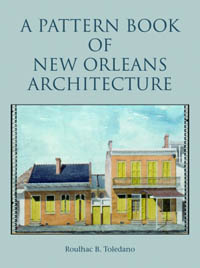
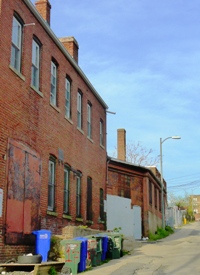
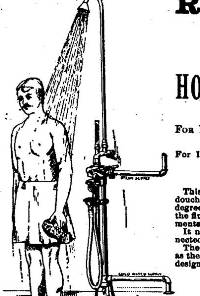

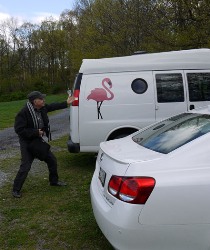
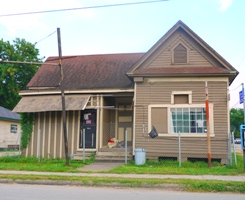
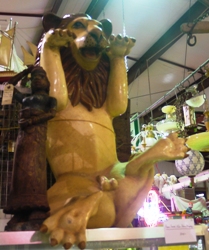




Wow, awesome
Very interesting article – I came upo nit by google search of fechheimer bros. Marcus is an ancestor of mine. His father Meyer lived in Mitwitz, Bavaria and had 14 children. My uncle put together a genealogy of this family and now that he has died I have become the keeper of this genealogy. I would very much like to get in touch with the author and find out where the information for this piece came from. For the most part it agrees with what I have. Feel free to contact me. Thank you.
Thanks-a-mundo for the article.Really looking forward to read more. Really Great.
I have a friend who works in the building across the street.. We were just talking this evening about how she and other people have experienced things in that building.. Maybe haunted? I’m intrigued.. Where could I find out more about the building?
LOL! I don’t know that it gets any more comprehensive than this article.
to Sue Welch. I am also a Fechheimer relative and am very interested in your uncles geneology as we also have one. Contact me!
To Stacey and Sue,I am also a relative of the fechheimer family,my mother Ellin Judith Fechheimer of Cinn,Ohio,was the daughter of marcus and Caroline Fechheimer.I have a wonderfull pencil drawing of the Fechheimer mansion.Would love to hear from either of you.
Could that not be forwarded for publication….a scan…
Any idea where Marcus Fechheimer was interred? Maybe at the West End cemetery by The Betts House?
United Jewish, Walnut Hills…Maybe?
You wrote in the above blog: “In 1850 prior to Wise’s arrival the Marcus Fechheimer Residence included him, his wife Nanny (22 years old), Rosaline (3/12 months old), Teresa Fechheimer (18 years old)—Marcus’ sister, Leopold Fechheimer (13 years old)—Marcus’ brother, Morris Fechheimer(17 years old)—Marcus’s brother, and Caroline Gibberd…”
First a correction: Marcus Fechheimer’ wife’s name was Nanni, not Nanny.
The census information quoted must have been taken prior to late summer, 1850.
Nanni (Thurnauer) Fechheimer was my great, great aunt. Her sister, Pauline Thurnauer Sachs Stix (b. Burgkunstadt, Bavaria, 9.17.1826 – d. Cincinnati, 10.18.1865). She lost her young husband, Henry Sachs, to cholera in July, 1850. Pauline had been married for only a few months when her husband died during what’s known as the ’1849 Cholera Epidemic’ in Cincinnati. She was pregnant at the time of her husband’s death with my great grandfather, Henry Sachs Stix. After her husband died, she went to live with her sister and brother-in-law, Nanni and Marcus Fechheimer. She lived with the Fechheimers until August 12, 1853 when she married Henry Stix.
This information came to me through a Stix family genealogy written by Aurelia Stix Rice for her grandson, Jonathan Charles Rice in 1921. Perhaps some of this additional information will be helpful to your investigations into the Fechheimer house. I’d be happy to know if anyone has additional information regarding the Henry Sachs who died in July, 1850. If so, feel free to contact me. Thank you.